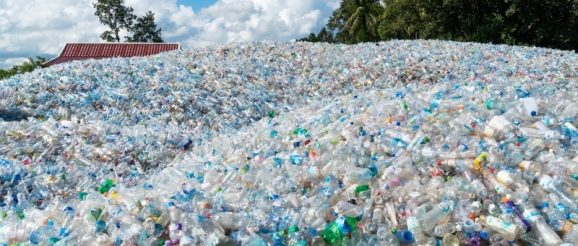How system innovation can help to combat development’s daunting challenges

This guest post by Shumin Liu and Alexandru Oprunenco of the United Nations Development Programme (UNDP) explores how locally tailored ‘system innovation’ approaches can tackle complex development problems like waste and pollution.
From extreme climate events to pandemics, the world is facing a new class of challenges, bewildering and often so complex that they defy the solutions of our times.
Business-as-usual public policy responses are based on several ill-suited tenets that are not up to the task. These include breaking down complex systems to identify and address the most measurable and visible symptoms, seeking a “best practice,” relying simply on technical expertise, or copying and scaling.
Such solutions don’t always work. Take for instance the issue of waste that has been flooding land and the oceans for decades. Yet, what makes headlines are niche solutions, such as bans on single-use plastic, tech panaceas, or waste-eating bugs.
If we look at waste not as ‘the issue’ but as a symptom, it is clear that unless we reduce waste creation, our quest to dramatically eliminate it will remain elusive. Similarly, if we are serious about renewing our lands and oceans, looking for waste management solutions is not enough. We need to focus on altering the blueprint of our current growth model: production and consumption.
This realization calls for renewed engagement with government officials, the private sector, civil society groups, and communities. The aim is to explore how we translate this logic into action.
Looking beyond off-the-shelf solutions and immersing in the local context is critical. It provides an understanding of the mindsets and social norms shaping an issue, which is missing in present policies.
Now, the UN Development Programme is experimenting with this approach in three specific places in the Asia Pacific region: from Da Nang, in Viet Nam to Rahim Yar Khan in Pakistan, and Pasig in the Philippines. We are looking at how informal waste-pickers play a vital but are often “unseen” role in official plans.
For instance, observations around waste in Da Nang show how waste segregation infrastructure is ineffective, as it does not adhere to cultural norms.
Many households will not use current bins as they seem to be averse to touching dirty lids. Different-coloured bins also add to the confusion of which bin to use for a particular type of waste.
We discovered that locally designed and produced transparent bins catering to different types of waste were adopted more easily for waste segregation.
Interviews with city officials highlight the “lost race” as growing investment in technical solutions continue to be defeated by unabated consumption. The true image of waste that emerges is the one that requires a change in behaviour and a change in formal institutions. For instance, the means of production and consumption must change right from the point of origin.
UNDP’s Innovation team tried to achieve such action – a change in behaviour – through engagement with players in the local ecosystem. The goal was to understand the complex dynamics, agree on the main obstacles, and conceive of an alternative reality, to guide our approach to waste.
In practice, it meant moving away from “managing waste,” to focus more on the upstream, the designing of goods, and the packaging, before they become waste. We geared our alternative vision towards a circular economy to rewire the current economic logic – the production and consumption – of material.
We stopped seeing “waste” as an environmental issue alone and linked it to the economy, businesses, jobs, and green recovery; as well as inclusion, engaging marginalized and vulnerable communities, as we build forward in a post-Covid era.
For instance, in Viet Nam, this work supports the country’s push for sustainability after COP26; from single-point solutions to a broad palette of strategies premised on collective action, by blending behavioural change and building social capital, along with traditional tools such as regulations and infrastructure.
With momentum growing, the next step is to translate this new approach into a coherent set of interventions aligned by the same logic. In Da Nang and Pasig, our portfolios were co-designed to support a phased approach: addressing immediate waste management challenges – reducing pollution in the environment and supporting development of secondary markets for waste – as well as seeding long-term transition towards a circular economy.
The first phase is focused on reducing waste through both behaviours and infrastructure, and recycling capabilities; while the second phase looks at how we can change material flows upstream by developing sustainable materials, designing products that can be repaired and reused, and changing consumer behaviour.
Our portfolios highlighted an ambitious role for governments: from using public procurement and digital marketplaces, to nurturing demand for ‘circular’ goods and services, to bringing in excluded communities for better city planning on sustainability and creating economic value whose benefits are shared more widely.
While the goals of these portfolios are different, the common thread is that addressing complex issues requires us to deploy a variety of tools, with the local community driving the change.
This portfolio approach does not apply to waste alone – it can be adapted and used in other thematic or geographic contexts. Local governments and communities can navigate complexity to bring about system change, across a range of sectors. For example, this approach has been applied to youth unemployment in Bhutan.
Now, we are activating our first “city” portfolios and have codified this new method in a ‘Guidebook for Adopting Portfolio Approaches.’ We see cities as an extremely promising space. On one hand, they are civilization nodes driving key adaptations for change. On the other hand, cities offer a platform that combines scale and flexibility for experimentation. Taken together, this is the space where the future will be prototyped and shaped.
The views expressed in this post are those of the authors and in no way reflect those of the International Development LSE blog or the London School of Economics and Political Science.
Image Credit: Orissa International.
